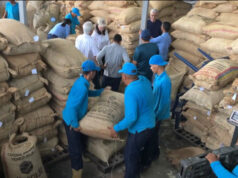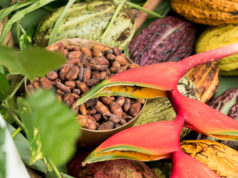2016 was a revealing year, very important for the cocoa and chocolate sector in Venezuela: one Venezuelan, Maria Fernanda Di Giacobbe, was awarded the Basque Culinary World Prize, considered the “Nobel Prize in Gastronomy”. Once again, the Icoa square of Chocolates El Rey is acknowledged as the best white chocolate bar in the world. New producers are deciding to embrace the adventure of planting cocoa. Likewise, with great modesty and huge satisfaction, we managed to launch the first communication platform devoted to promoting Venezuelan cocoa and chocolate.
Given so many reasons to celebrate, at this time Vivaelcacao.com brings you some extracts from the most read interviews since our launching in the last November.
What follow are the most emblematic personalities, the most interesting questions, the most straightforward answers, and of course, your points of view about each one.

María Fernanda Di Giacobbe, Chocolate maker of Cacao de Origen and Kakao Bonbons
Approach: Cocoa as an educational and development element for Venezuela:
– When we speak about cocoa it leads us straight to chocolate. Do you think that it would possible to separate both worlds and describe their own rhythm and beauty? How would you describe them?
– Cocoa is our history, our identity, our DNA. Chocolate is the future projection. It is the new Venezuela that we are building. In this case, they are indivisible since for making magnificent chocolates it is essential to know cocoa, how to plant it as well as process it properly. Therefore, the present movement of Venezuelan chocolate restores our identity and our plantations, connects us as a country and among the communities, as individuals, as families, as inhabitants of the same territory. Our Criollo cocoa that is unique on the planet.
– We celebrate how cocoa is awakening Venezuelan’s awareness. It is taking an interesting and juicy boom. If you had to mark a before and after in the history of cocoa in Venezuela, how would you do it?
– We have had several turning points. Our whole history is related to cocoa. Being the origin of Criollo, superior, fine cocoas; being the first exporters, transforming landscapes by the spreading of cocoa plantations, which in turn generated to bringing slaves from Africa, and our independence moved forward due to the need for freedom and a free trade of the seed. Hence, there are many important events. Today, the moment is favourable, because chocolatiers and producers have joined, some events are being held like the Chocco Venezuela sponsored by the Italian-Venezuelan Chamber; since there are thousands of women chocolate entrepreneurs and also, that producers can make quality chocolate with the principle Bean to bar.
– At an educational, sense of belonging and economy level, what could cocoa represent for Venezuelan people?
– It has been a social, economic and cultural platform for future projection. Cocoa is now the possibility of the country in which we could become.
– What are the most unshakable paradigms and what else holds us back from moving forward as serious cocoa producers before the world?
– Our cocoa is so good that does not need fermentation. This is terrible! That it is the best cocoa in the world. It is genetically, but it needs more and better post-harvesting work, knowledge, structures and cutting-edge technology. Our cocoa is the most appreciated of all. It is also true, but if it did not arrive on time and in good condition, as it is happening, it would not be the first on the list.
– Three personal satisfactions given by cocoa?
– The idea of creating a Venezuelan bonbon with our ingredients, flavours, aromas and textures that, as we say, dances with the Chuao devils, wearing the colours of Zulian tapestries. To see women become certified chocolate makers having knowledge and a job that makes them professionals. Last but not least, to realize that we could change the country.
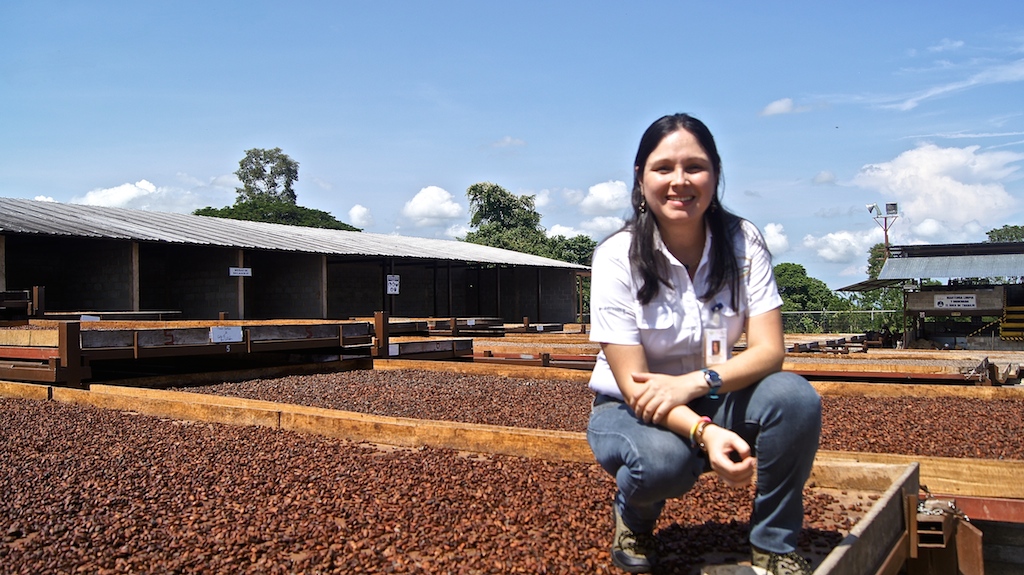
Andreina Portillo, Agricultural Engineer. Coordinator of the Plan Cacao in South of Lake.
Approach: Awareness of producers about their cocoa
-You constantly proclaim that without cocoa farmers there is no chocolate, why?
-Because cocoa farmers produce the raw material of chocolate, thus, if we do not promote cocoa production through increasing planting density, it will be impossible to meet the chocolate goals. This means that our main ally must be the producer. Therefore, our lodestar must be to strengthen the countryside.
–Then, now more than ever our attention should be turned to the countryside
-That is so. Notice that since colonial times we have not longer produced more than 25 thousand tons of cocoa due to lack of strength of the countryside. It is not enough to believe or know that we have the best cocoa in the world, it is necessary to fully demonstrate it. In this sense, I consider very important to establish plans and projects together with the government, private companies, universities and specialized institutes in order to enhance the production of this product, especially productivity and profitability. Recall that the national performance is very low.
“You’re talking about rescuing the Criollo cocoas, are they in risk?”
-Yes because for a long time there have been introduced some products with features different from Criollo. Although these cocoas are more resistant to plagues and diseases, they are more rustic. Hence it has been affecting the production of the Criollo cocoa. Here the cultivation of this seed is handled like a plot, to put it somehow, thus, those resistant to inattention are the cacaos hybrids or Foresteros. We have an unresolved issue with the country.
– What is the first advice you give a producer when you have the opportunity?
“The first advice I give is to stop seeing his production unit as a simple plot and start seeing it as a company. In this sense, it is necessary to promote a change in his attitude. Producers must have an administrative control of their farm in all aspects so that its activity is profitable and sustainable. Having this profile of producer, the relay generation would feel more motivated to continue with the activity.
Besides being her second house, for Andreina Portillo the fields are a school that never finishes teaching her the dynamic cocoa world. The researcher does not stop recalling that without cocoa farmers there is no chocolate. For her, a change in the producer’s mind is the key for strengthening the Venezuelan product.

Jorge Redmond, President of Chocolates El Rey.
Approach: Political and social aspects which prevent an optimal production and exportation of cocoa
– Even though Venezuelan cocoa is highly famous worldwide thanks to its excellent flavour and aroma, the industry is not exactly what is expected. Why isn´t it so?
– I believe that Venezuela is a country with an enormous potential, but unfortunately, some political and a very low level of education in some sectors are factors that have influenced on the crisis. In Venezuela there is also what Moises Nahím calls “a culture of condominium” that makes us care about what happens inside our doors, without realizing that it is also essential to care about our neighbour. We must look out for the whole surrounding, thus, while that does not change it is difficult to make out another scenario.
– Would you add this to the lack of link in the private sector?
– There are some individuals, especially in the exporting area, working isolated without contributing to the industry, but in the vast majority there is consensus, especially in the niche market and producers. I would say that 80 % of producers agree with what we are doing.
Are there difficulties? Yes, but there has been much union. This country is driven by the private sector. Some small companies have certain weaknesses because they do not make alliances. They make their own effort almost alone, and their intention to move forward has to be praised, but they ought to get more involved in their community, ought to visit the plantations, ought to talk with the producer and meet the agronomists. For instance, our engineer Francisco Betancourt’s attitude is emblematic because he helps producers, gaining their affection and respect and also high credibility among them and the company, because he goes where he is needed, he stays with people who need him, making a difference.
– Why does the export issue represent a “sword of Damocles” for the producers?
– Due to bureaucracy that this government has imposed. For instance, 15 years ago, to export a container needed four steps. Now, one has to comply with 90 requirements among 15 ministries. The government assumes to be controlling, but that’s not true. They have a strong distrust in the private sector, even though it is the private sector which moves the economy of a country.
For instance, if someone places an order from Japan, it can take four months only to complete the paperwork. What sense does it make in terms of competitiveness to the country? None! Cocoa suffers the ravages of time spent waiting for export.
– When we talk about the Venezuela case the scenario is not very encouraging. But you believe in change.
– I believe we can. I think Venezuela can make the grade. We have everything to get it. Chocolates El Rey has far demonstrated how important will power is. It involves work, but who comes up with excuses, will hardly achieve something. Against all odds, El Rey was facing a difficult situation, then gave a change of direction and began to produce not only for the domestic market but also it started to exporting semi-finished and finished products to competing globally. That means making the food sector a work. Icoa tablet won for All Americas award, San Joaquin tablet won a bronze medal at the International Awards of Chocolates in New York, as well as in the London Global Competition where it also won. All those come from Venezuela, what shows that excellence is possible.

Elvis Portillo, Dean of the Faculty of Agricultural Science at the University of Zulia.
Approach: Details and the importance of the Cocoa Route, also known as Chocolate Route
-The Route of Cocoa was very successful, why was it?
-Because it allowed to organise producers in small cooperatives or associations in order to find out their needs, projects and lines of investigation in unison with the University of Zulia.
-And what else was achieved with this initiative?
– This project brought added value to cocoa from the creation of small cooperatives in which women and their children participated in making some cocoa by-products. With the contribution of Shell, we went from three to ten producing municipalities. Subsequently, other companies such as the state oil company PDVSA joined. Hence, we managed to train more than 200 producers as well as to increase the production of cocoa and its sowing area. It resulted in a positive socio-economic impact from 2007 to 2012. An information system was also developed to state the producer’s characteristics and geographical location. Additionally, we installed three cocoa nurseries in the municipalities of Sucre, Colón and Rosario de Perijá.
“And what happened next with the Route of Chocolate?”
-In 2012 there was change in the Development of Science and Technology Foundation. The projects were reduced and centralised, as well as the resources. As a consequence of this centralisation, the companies stopped making contributions. Before this new reality, the nurseries were practically dismantled.
– And why do you consider important the reactivation of the Route of the Chocolate as a long term project?
-Because it would determine a goal to achieve for all sectors involved with the seed. This would mean organising, as I said, producers in cooperatives or associations, technology transfer, training, developing added values and reaching, why not, ecological niches or the appellation of origin. All this has to lead to a combined effort, similar to what it is done in Ecuador, Colombia or Peru, where their production range from 2000 to 3,000 kilograms of cacao per hectare, while we continue talking about 300 to 400 kilos per hectare.
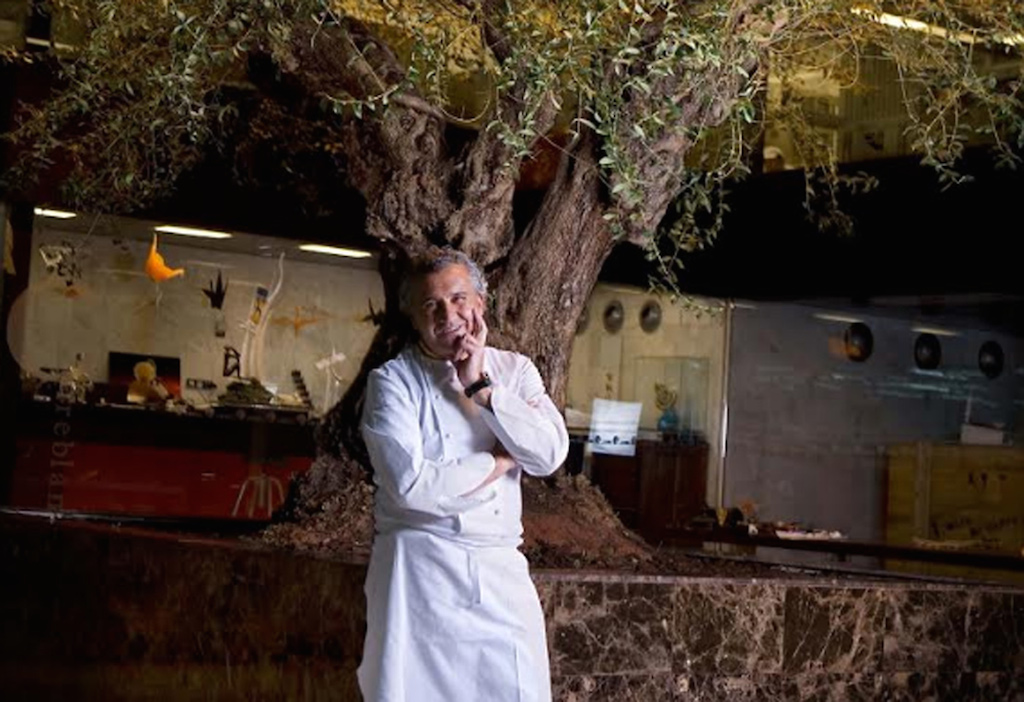
Paco Torreblanca, Spanish pastry chef
Approach: His passion for cocoa, especially the Venezuelan one.
– You have studied in Paris for more than 10 years. How did the City of Light mark you?
– During the 14 years of my stay in Paris I learned all the basics and discipline on confectionery as well as the accuracy of a quality work. Jean Millet gave me everything, the kind of professional I am today is thanks to him and to this city.
– Is chocolate the king of patisserie? Why?
– Without any hesitation chocolate is the king of patisserie, it allows us to create from artistic pieces to great desserts, cakes, pastries, ice cream … with so many nuances and different flavours. It is something unique.
– What is the current trend of chocolate in the world? Are there any differences by regions?
Every day we have better and different varieties of the finest chocolates. Cocoa from many parts of the world allows us to produce unique and exceptional chocolates.
– Dou you belong to those who think that chocolate is a weapon of seduction?
– No doubt it is a weapon of seduction. With chocolate we can have people get passionate.
– I have read that nature is part of your inspiration. In this sense, have you found inspiration in the colours, landscapes, rhythms and flavours of Latin America?
– Yes, many of my trips to Latin America have always enriched me in many ways. For instance, I have brought leaves from the forests to replicate them in chocolate. My visits to the Amazon have been one of my most important sources of inspiration.
– We understand that you know that Venezuelan cacao is considered the best in the world. Tell us, what is your opinion about this seed that grows in this part of the planet?
– I am a great lover of Venezuelan cocoa, its scent and its touch of acidity as well as its unique nuances that make it the best in the world, without a doubt.
– Let’s talk about the patisserie that you have created with Venezuelan cocoa…
– Much of my work, like chocolates and especially in patisserie. It is the great reference in many of my creations, it provides me aromas and nuances difficult to achieve from other cocoas.
– What feelings did Venezuelan cocoa rekindle in you … flavours, aromas, texture…?
– It’s always aroma and scent, depending on its roasting and harvest. I found it something unique.

Michelle Buck, vice president and Director of Hershey’s Chocolates for South America:
Approach: Successful examples of chocolate factories in the world.
PG.- Since the beginning Hershey’s has been a company that has stood out not only to offer a product that pleases the consumer, but also to keep a high standard of quality in their chocolates. What is the source of this company success?
MB.- Since Milton Hersey’s founded the company in 1894 our main task has been selling flavours and sensations. For us in Hershey’s a smile equals a sign of approval from our millions of satisfied consumers. We have products like a milk chocolate bar since the beginning of operations and still remains with us, continuing to be one of the best sales in the world. Hershey’s operates over a range of 140 countries where our products are directly distributed. Also, we have a supply chain of more than 40 nations what allows us to process all products and by-products from our successful formulas.
PG.- What about Hershey’s Cocoa? Where does it come from?
MB.- Historically, West African countries have been our major suppliers, although our focus has recently moved towards new countries such as Malaysia and Ecuador. In the past we used to have direct distributors in many countries, but their political instability and mass production load have made us resort to stock and distribution markets, where prices are more competitive and availability is immediate.
PG.- Would Hershey’s buy cocoa from Venezuela?
MB.- Of course. In fact, we did it for a long time, especially when Venezuela was considered one of the largest producers worldwide. Moreover, for gourmet products Venezuelan cocoa is a mandatory reference. There is no doubt.
PG.- What are Hershey’s future plans?
MB.- Up to now, to maintain the high production and quality standards we already hold. We have increased our sales from $ 2.2 billion annually in 1994 to $ 6 billion at present, and hope to double that figure over the next 10 years. On the other hand, we want to continue to support our partners in helping people and also our development programmes for new employees in order to maintain an employment average that keeps us as one of the best age average per employee within the United States.
